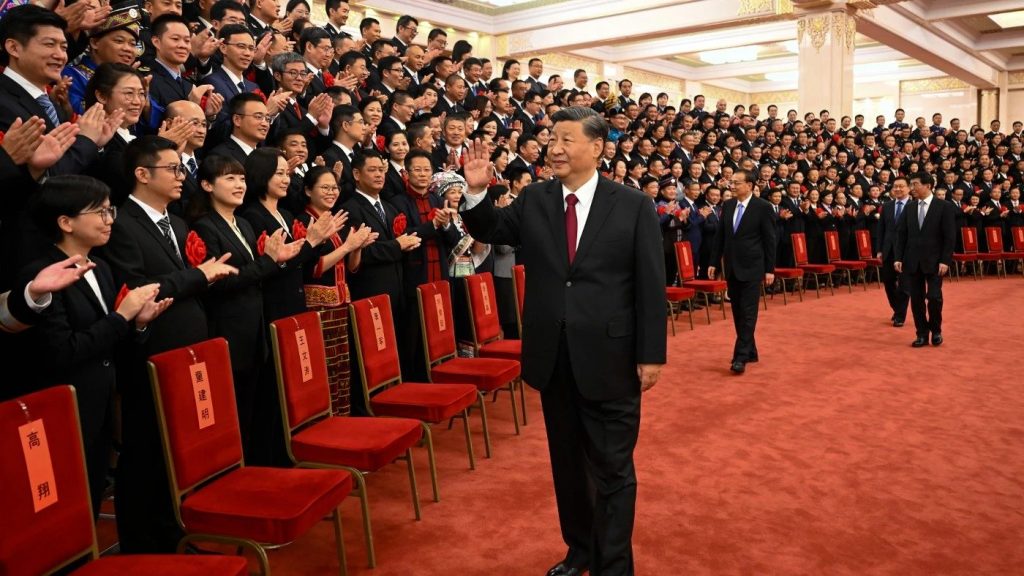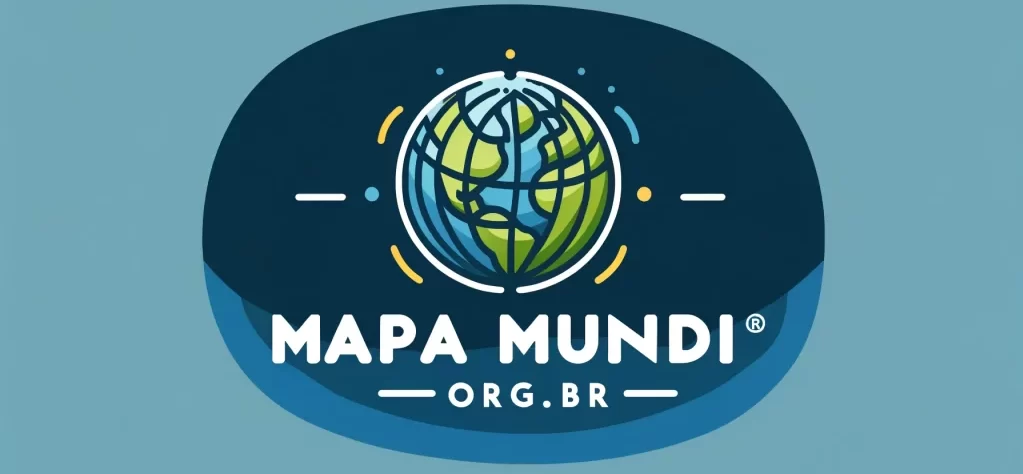
Teve início neste último domingo, 16 de outubro, o 20º Congresso Nacional do Partido Comunista Chinês (PCC). Nele deverão ser traçados os objetivos gerais de desenvolvimento da China até o ano de 2035, de acordo com relatório enviado previamente aos congressistas.
Estes objetivos foram definidos no “14º Plano Quinquenal (2021-2025) para o Desenvolvimento Econômico e Social Nacional e a Visão 2035 da República Popular da China”, com base nas propostas apresentadas pelo Comitê Central do Partido Comunista Chinês, que alinhou as estratégias e as prioridades do governo e orientou as atividades do mercado. Segundo este documento, trata-se de “um projeto para a nova jornada da China em direção a um país socialista moderno, e um plano de ação conjunto para o povo chinês”. Os planos quinquenais têm formulado tradicionalmente a estratégia de desenvolvimento e de reforma do país.
No documento a ser submetido à aprovação dos congressistas estão traçadas as principais metas sociais, econômicas, e também os setores considerados chave pelo governo central, traduzidos em diretrizes e políticas de desenvolvimento na forma de metas e objetivos, tanto em termos quantitativos quanto qualitativos.
Entre seus itens principais, segundo informações da Xinhua, imprensa oficial do governo, constam: 1) acelerar o ritmo da economia e a capacitação científica e tecnológica; 2) alavancar o PIB per capita a fim de igualá-lo ao dos países desenvolvidos de nível médio; 3) colocar a China entre os países mais inovadores nas áreas de ciência e tecnologia; 4) construir uma economia modernizada que atinja um novo patamar de desenvolvimento através da industrialização, informatização, urbanização e da modernização do setor agrícola; 5) democratizar o sistema político e a capacidade de governança; 6) construir um país baseado no direito, governança e sociedade; 7) tornar-se líder nas áreas da educação, ciência e tecnologia, cultura, esportes e saúde; incrementar significativamente o “soft power” do país; 9) garantir melhor padrão de vida para a população e elevar a renda média “per capita” a novos patamares para todas as camadas sociais; 10) garantir acesso equitativo aos serviços públicos básicos; 11) assegurar padrões modernos de vida para as áreas rurais; 12) desenvolver e assegurar novos padrões ecológicos e reduzir as emissões de carbono; e 13) fortalecer os sistemas de segurança e de defesa nacionais e modernizar as forças armadas.
Ufa!!!! Ambicioso?… mas em que cenário se formalizarão estas diretrizes?
Sabemos que a China enfrenta enormes desafios, como o enfraquecimento do ritmo de expansão do PIB, uma crise imobiliária doméstica e um cenário internacional conturbado. No final de setembro, por exemplo, o Banco Mundial reviu as projeções de crescimento do país, estimado em 2,8% para este ano, contra 8,1%, em 2021. O desmoronamento do setor de imóveis, que a quebra da segunda maior empresa do mercado imobiliário chinês, a incorporadora Evergrande, revelou, e os seguidos “lockdowns” para domar a covid não parecem garantir este ímpeto otimista.
Observemos, então, o reverso desta medalha.
O rápido crescimento econômico elevou a sua renda per capita, de um dos países mais pobres do mundo, na metade do século passado, ao nível de renda média-alta. Ao retirar quase 100 milhões de pessoas da pobreza, a China cumpriu a árdua missão de erradicar a miséria absoluta, e hoje, pelos padrões do Banco Mundial, responde por mais de 70% da redução da pobreza da população mundial. Ela é hoje a segunda maior economia do mundo e está-se aproximando do status de país de alta renda. A partir do processo de abertura delineado e desenvolvido por Deng Xiaoping, no final da década de 70 do século passado, a China tem canalizado uma parcela significativa do seu Produto Interno Bruto para investimentos nas áreas de infraestrutura, como energia e transporte, significativamente maior do que outros países em desenvolvimento. O investimento no capital humano permitiu a ela perceber melhor o potencial de sua enorme população. Para tanto, o governo, que tem buscado uma gestão macroeconômica prudente, especialmente após o início dos anos 1990, está determinado a adotar sistemas de mercado e regimes abertos de comércio e investimento.
É neste contexto que o comércio exterior atualmente responde por uma porção substancial da economia. Neste curso, a China tem vivido experiências consideráveis desde o início da década de 1950. Em 1954, um ano após o término da Guerra da Coreia, o mundo comunista representava 75% das suas trocas externas. Esta situação sofreu mudança expressiva desde o início das reformas econômicas de Deng Xiaoping no final da década de 1970, quando foram criadas as Zonas Econômicas Especiais (ZPE’s) para integrar a China ao sistema internacional de comércio. Hoje ela é o maior país exportador do planeta e centro de fabricação de produtos de média e alta tecnologia, beneficiando-se da vantagem competitiva do baixo custo (por ora…) da sua mão-de-obra abundante, o que convenceu gigantes indusrriais como a Apple americana e a Samsung coreana a instalarem fábricas no país.
Cabe relembrar que no último congresso, realizado em 2017, foi dada ênfase a uma série de reformas voltadas à abertura de setores controlados pelo Estado, concedendo mais direitos à propriedade rural, por exemplo. A propósito, o Conselho de Estado já anunciara, em maio de 2015, um plano – “Made in China 2025” – visando atualizar e consolidar a indústria manufatureira do país, com o objetivo de transformá-lo numa potência global nas próximas décadas, capaz de influenciar as cadeias de suprimento e impulsionar a inovação. Baseou-se, para tanto, na percepção de que o mundo está passando pela quarta revolução industrial..O plano identificou 10 setores-chave – robótica; tecnologia da informação; aviação e equipamentos aeroespaciais; equipamentos marítimos e navios de alta-tecnologia; transporte ferroviário; novas energias e veículos que economizem energia; equipamentos de energia; equipamentos agrícolas; novos materiais; e biofarma e equipamentos médicos de alta-tecnologia – que constituirão prioridade nas ações governamentais . Esta política desafia a supremacia econômica das principais economias e corporações internacionais deste século, segundo os analistas.
No contexto mundial, o projeto ambicioso da “Nova Rota da Seda”, ou “Belt and Road Initiative”, em inglês, estratégia adotada pelo governo envolvendo o desenvolvimento da infraestrutura e investimentos chineses em países da Europa, Ásia e África, que fora apresentado pelo Secretário-Geral do Partido Comunista Chinês, Xi Jinping, em setembro e outubro de 2013, durante visitas que fez ao Cazaquistão e à Indonésia, sinalizava a ambição de concretizar o “Sonho da China”/”The China Dream”, termo cunhado por um professor da Academia de Defesa da China, Liu Mingfu, segundo o qual o objetivo principal da República Popular é tornar-se a economia líder do planeta, como Xi alardeia em quase todos os seus discursos.
Só que…
Os desafios que ela enfrenta são de proporções semelhantes à sua ambição. Entre os principais, podemos elencar alguns particularmente agudos. Primeiramente, o hiato que se criou com a política de “um só filho por família”, iniciativa adotada pelo governo para impedir a explosão demográfica que se prenunciava na década de 1970. Esta política foi encerrada em 2021, após ter sido modificada para dois filhos, não antes, porém, de criar um vácuo geracional que já está afetando a vida da população e sobretudo a economia, pelos encargos que as gerações que não tiveram irmãos terão de arcar, em termos previdenciários, por exemplo, para fazer frente e prover a subsistência das gerações mais velhas. Um segundo é o inchaço das zonas urbanas decorrente do êxodo da população rural na busca de oportunidades e empregos melhores que as indústrias e os setores terciários proporcionam nos centros urbanos, onde a taxa de residência permanente atingiu a casa dos 64,72%, em 2021. Esta taxa deverá aumentar para 75-80% em 2035 ! É fácil (?) imaginar o que significa 1,4 bilhão de indivíduos vivendo nas cidades em termos de questões de habitação, transporte, educação, saúde pública e poluição, por exemplo. Outro desafio que se avizinha é o crescente descompasso entre as classes sociais, que a afluência dos indivíduos mais empreendedores – ou apaniguados do poder – vem cristalizando. Seria difícil, hoje em dia, para um “comunista raiz” entender o dado estatístico de que a China possui, hoje, o maior número de milionários do planeta…Onde estariam os princípios que alimentaram a luta de Mao Zedong e seus companheiros comunistas da “Grande Marcha”? Daí também o alto índice de corrupção que infesta o PCChinês, e cuja erradicação tornou-se uma obsessão para Xi Jinping. E, finalmente, como lidará ela com o crescente antagonismo dos países vizinhos temerosos do seu crescente poder?
Entretanto, a questão mais aguda, o anseio por maior liberdade, individual e coletiva, que a crescente exposição da população aos meios de comunicação estrangeiros alimenta malgrado a censura, e as experiências vivenciadas no exterior – os chineses constituem o maior contingente de turistas internacionais – poderá tornar-se o “calcanhar de Aquiles” do Partido Comunista de Xi Jinping e seus camaradas…
Grande desafio. Mas disto tratarei numa outra postagem.
Doutor em Direito Internacional Público em Paris. Ingressou na carreira diplomática em 1976, serviu nas embaixadas de Bruxelas, Buenos Aires, Nova Déli, Washington, Pequim, Tóquio, Islamabade (onde foi Embaixador do Brasil, em 2004). Também cumpriu missões transitórias no Vietnã e Taiwan. Viveu 15 anos na Ásia, para onde orientou sua carreira por considerar que o continente seria o mais importante do século 21 – previsão que, agora, vê cada vez mais perto da realidade.
